Antique or Vintage?
There is an interesting and not always clearly interpretable question – how to determine exactly what is a vintage watch? Is there any way to describe this term more or less correctly? If you try to give an absolutely definite answer to these questions, then these attempts will certainly be unsuccessful. And yet, as an auction house, it’s very important for us to understand the subject we’re working with, and in this activity, as in any other creative activity, it’s very important to interpret things and processes correctly.
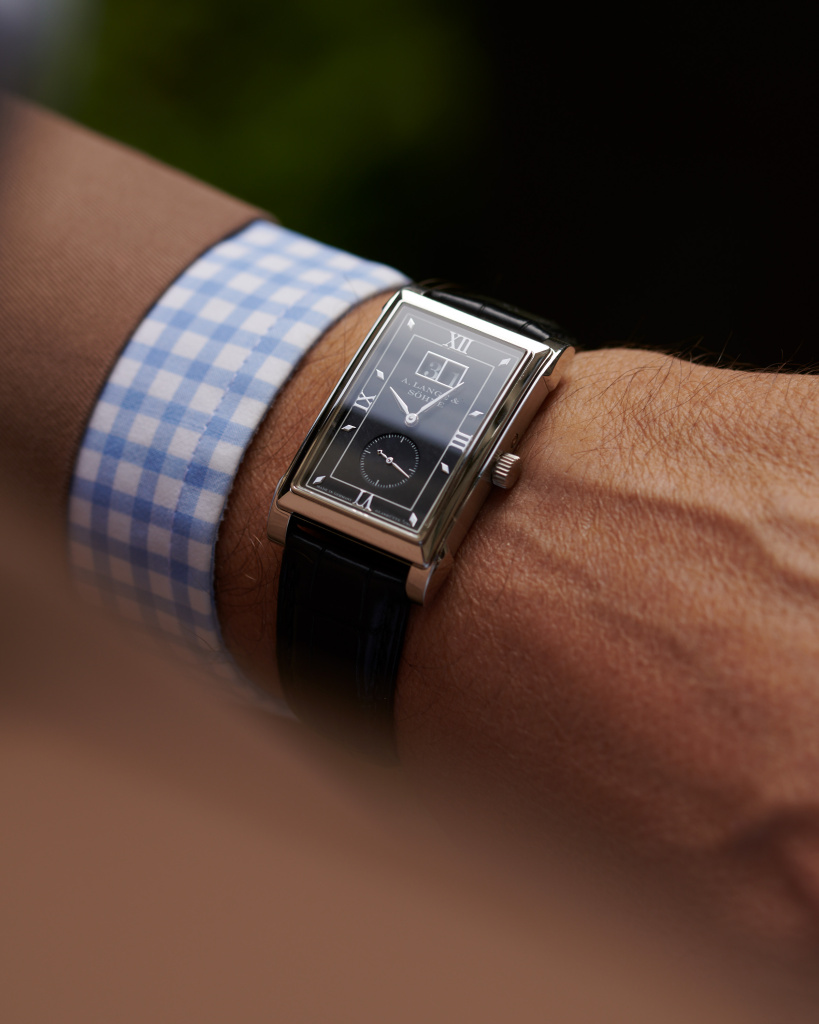
The market seems to agree on one thing: You can call a watch vintage if it’s less than 100 years old, and an older watch deserves to be called an antique as long as it’s not junk. If you follow this rule, until recently, almost all old wristwatches fell into the ‘vintage’ category. However, since the boundary between antique and vintage wristwatches is now 1923 according to the formal rule, we believe that wristwatches whose regular production began around 1915 on a more or less large scale should still fall into the ‘vintage’ category. In our opinion, it’s too early to transfer them to the ‘antique’ category. It should be the logic behind the evolution of the watch industry that counts. We’ll wait and see.
Vintage or Modern Vintage: the ‘Royal Oak factor’
So, we have quite a long period of time at our disposal, covering more than a century. Are all wristwatches from this period the same? No, of course not. A more or less generally accepted approach is that a watch that came on the market 50 years ago and later, up to 1915, is considered vintage. In principle, we also adhere to this view, because 50 years ago a fundamentally important event took place: the launch of the Royal Oak watch by Audemars Piguet. Connoisseurs, of course, remember this date – 1972, and now this year takes on another very important meaning, because it marks the moment when 50 years ago the modern wristwatches were introduced, which are still relevant today. It’s clear that this isn’t the case in a strict sense and any other watch can be found for this role, but we prefer not to – the Royal Oak is as important and significant as a cornerstone. This is all the more important because the Royal Oak Ref. 5402, known as the ‘Jumbo,’ is still made today in a largely preserved form. This means that if you buy a ‘Jumbo’ at auction, you may well consider wearing this watch. In our opinion, this is the basic factor that allows us to distinguish between vintage watches and modern vintage watches. Let’s call it the ‘Royal Oak factor’: how easy it’s to imagine a vintage watch being worn like a modern watch.
Of course, as always in similar situations, this definition is fuzzy. Indeed, older watches can be quite wearable, example fine diving watches from the 1960s or chronographs from the 1940s and 1950s. But the ‘Royal Oak factor’ is so significant that while we admit there are obvious exceptions, we still accept the 1970s as the dividing line between the Vintage and Modern Vintage watch categories.
Modern Vintage watch or ‘previously enjoyed’ watch?
Probably you're already asking yourself a very logical question: how long is the period of Modern Vintage watches, what can we consider as its end? In our opinion, it should be the period when the brand stops producing a reference that caught our attention. Is the steel Nautilus a Modern Vintage watch? Yes, most likely. It's clear that this definition is very uncertain, but still it can work in relation to a specific reference. After all, most brands usually don't produce a reference for more than 10 to 20 years. However, there are long-lived references, for example the Breguet Tourbillon Ref. 3350/3357, which was launched in 1988 and is still in production - but we think you'll agree that this is a wonderful exception that deserves special consideration.
Therefore, we can look at the Modern Vintage time span from the 1970s to the 2010s.
Modern references that aren’t or no longer manufactured but continue with minor variations are what we call secondary watches, we can also call them used watches or ‘previously enjoyed’ watches. Who is the lucky inventor of this formula, a happy euphemism? Probably the aftermarket dealer Beverly Hills Watch Co. of California, which registered ‘Previously Enjoyed’ as a trademark.
What is important and what is appealing about vintage and modern vintage watches?
The market for vintage and modern vintage watches is growing. In recent years it has left the grey, insufficiently observed and little analyzed zone where it was before. The influence of developments in online technologies, internet commerce, delivery and secure payments is huge for the revival of this business. Covid has only nudged this market and given it a chance. According to some estimates, the secondary market could be comparable to the new watch market in terms of revenue in the near future, and it’s quite possible that it’ll surpass it. Therefore, it’s important to analyze what factors play a role in the secondary market, what makes vintage watches attractive to a modern collector, what are the main features of these watches and what advantages they offer.
Importance
This is a factor with many facets. First, it can be historical significance, the fact that the watch belonged to a historical figure or celebrity, the use or appearance of the watch in historical circumstances – we can call it historical provenance. Second, it may be the significance of the watch itself, or the significance of the design, technology, inventions it embodies that have had a significant impact on the history of watchmaking. Third, it may be a watch that has become a landmark in the history of the brand that made it. All this is of great value to collectors.
Attractiveness
A watch should be perceived as something beautiful, desirable and therefore an expression of creativity, a monument to the style of the time, a testimony to the craftsmanship and good esthetic sense of the masters or brands of the past. Often this is the personal opinion, which may change over time and with growing knowledge.
Condition
This is a very important parameter that shows how much the condition of the watch differs from its original ex-factory condition. This refers to the case, the crystal, the bracelet, the clasp, the movement as a whole and its individual parts. A dream watch in this sense is a New Old Stock (NOS), which was stored somewhere and never used.
Authenticity
The authenticity criterion is very similar to the condition factor. It shows whether all components, including decorative finishes, are original and have been preserved in their ex-factory condition. It often happens that a brand replaces components with original parts during maintenance, but they’re different from those used in the manufacture of the original reference. The situation is even worse when the maintenance or restoration is carried out by a third party – a service company or a watchmaker, who cannot guarantee the authenticity of the spare parts. The worst case would be when a refurbished watch with non-original components is intentionally passed off as original.
Quality of the movement
A very important criterion, the importance of which is clearly underestimated. This can be facilitated by auction houses and especially by other aftermarket sellers, who unfortunately very often don’t provide detailed caliber information and photos. The quality of a movement includes such factors as its technical excellence and complexity, complex technical solutions, unusual design, rarity (small production run), functionality, attractive design, perfection and beauty of workmanship and finishing.
Rarity
A watch, especially a good one, from a well-known brand isn’t something you just throw in the trash. Rather, it’s destined for a different fate: becoming a family heirloom or a collector’s item. Of course, you can’t ignore the factor of wear and tear, after which the watch loses its practical and collectible value. As a result, only a small portion of the original production finds its way to the secondary market, making vintage watches rare. Especially if a watch has maintained a good and – which is very rare – an excellent condition. Especially if the watch was already rare in its time. It’s well known that Daytona chronographs weren’t as sought after as other, simpler models in the Rolex collection due to their relatively high price. That is why we’re now experiencing a boom in vintage Daytona watches on the auction and secondary market.
Brand image
Of course, we shouldn’t underestimate the value of the brand in the watch market.
Researchability
Besides a probable earning opportunity, always positive emotions and pleasant memories, vintage watches can provide a rare and therefore very valuable intellectual pleasure. Hunting for a rare specimen, studying the history of these watches, searching for all available information on production volumes, periodization and varieties, communicating with enthusiastic people and finally researching these watches to be the first to discover previously unknown types and varieties - this brings deep satisfaction. There is a lot of information on the Internet, not everything that is published is confirmed and true, but there are still many watches waiting for their explorers. The watches of some brands are studied in detail. This is done both with the participation and support of brands (in particular Audemars Piguet, Patek Philippe, Longines, Omega, Heuer, IWC) and leading auction houses, and without such participation (Rolex).
The value of being off the beaten path
Ordinary, run-of-the-mill watches are flooding the market. This is true of both the new watch market and the aftermarket. Against the backdrop of ordinary watches, unusual watches stand out – unusual in design, in execution, in the type of movement used, in technical purpose. Sometimes by the size. Sometimes by the color of the dial. Collectors appreciate unusual watches as an expression of ingenuity, imagination and exceptional thinking style of the watchmaker or brand.
Theme
An important factor that often has a decisive influence on the collector. It may be a watch by a particular watchmaker or brand from a particular era. It can be complications – chronographs, calendars, repeaters ... It can be their purpose – diving watches, chronometers, pilot watches ... Everything that can link one watch to another and finally to the history and evolution of watchmaking is important, which makes collecting watches a thoughtful, logically structured, fascinating and therefore enjoyable passion.
Wearability
This is an important bonus for the buyer of a vintage watch. Not all vintage watches are wearable. The closer to modern times they're produced, the more often this is the case. The presence of a self-winding caliber increases the wearability - which is to hide, because we have lost the habit of winding watches manually. Besides, wearing a vintage watch is about enjoying life. Wearing a vintage Submariner or an early Royal Oak is exquisite. It shows that someone has good taste and knows about vintage watches. Another motive can be an unfulfilled desire: to wear a watch you once liked but couldn't afford because of the high price.
Investment?
Vintage watches are coveted collectibles and are in high demand. Therefore, they can be considered an investment, as they retain their value and often increase in price. We believe that no one can advise you how to manage your money and whether it’s worth investing in watches. In fact, the market is growing and many vintage watches are getting more and more expensive, even if there are periods of market cooling and turbulence. Therefore, from our point of view, we can only recommend one way of investing – in your positive emotions, your passion, your curiosity and the joy of owning an excellent vintage watch that is a noble part of watchmaking history. If you’re lucky, your watch will bring you a profit, of course, only if you decide to part with it. Otherwise, you’ll also be in the black, because this watch has given you a lot of pleasure and will remain in your possession. We believe that this is the best investment.
Ineichen Auction House is offering a collection of wristwatches from the 1930s to the 2000s in its upcoming Vintage and Modern Vintage Watches auction. The collection provides a broad look at the art of watchmaking during this period and offers many opportunities for the thoughtful connoisseur. We believe that many lots in the upcoming auction will demonstrate the importance of the factors that make vintage watches so attractive.
If we look at the importance factor, the first lot we want to mention is Lot 07, the Patek Philippe stainless-steel Ref. 3419 from 1962. This model has a fascinating history that deserves to be further explored in detail. As soon as the words ‘Patek Philippe’ and ‘steel’ appear, the watch connoisseur is always on alert. The Ref. 3419 lives up to expectations. It’s called ‘Convertible’ because the steel case of this model has an unusual design, where the lugs of the leather strap or Milanese bracelet are detachable. To do this, you just need to unscrew the back cover of the case. This is the meaning of the nickname ‘Convertible’: The original idea is that the watch can be changed from a leather strap to a steel Milanese bracelet. The second interesting fact is that this model is considered the younger brother of the famous Antimagnetic references 3417 and 3418 from the early 1960s. For them, an improved antimagnetic version of the excellent 12’’’400 caliber was developed, which received the designation 27 AM 400. Note the s-shaped main bridge, a Gyromax balance, a gold lever and a free sprung, self-compensating Breguet overcoil hairspring – that definitely makes this caliber very valuable. Having a watch with such a caliber in the collection is absolutely the right choice for a collector who is interested in unusual classic and technical vintage watches. This Ref. 3419 is equipped with exactly this movement, hallmarked twice (!) with Poincon de Geneve, which only adds to its appeal. Unfortunately, we couldn’t find any information about the purpose for which Patek Philippe accompanied two Antimagnetic references with the release of ‘Convertible’, we prefer the version that Ref. 3419 is a kind of civilian version of them, but with the design twist of an interchangeable strap and Milanese bracelet option. The undoubted advantage of Ref. 3419 is its lower price in the market compared to 3417 and 3418, and we’re sure that this watch will be more recognized in the collector community.
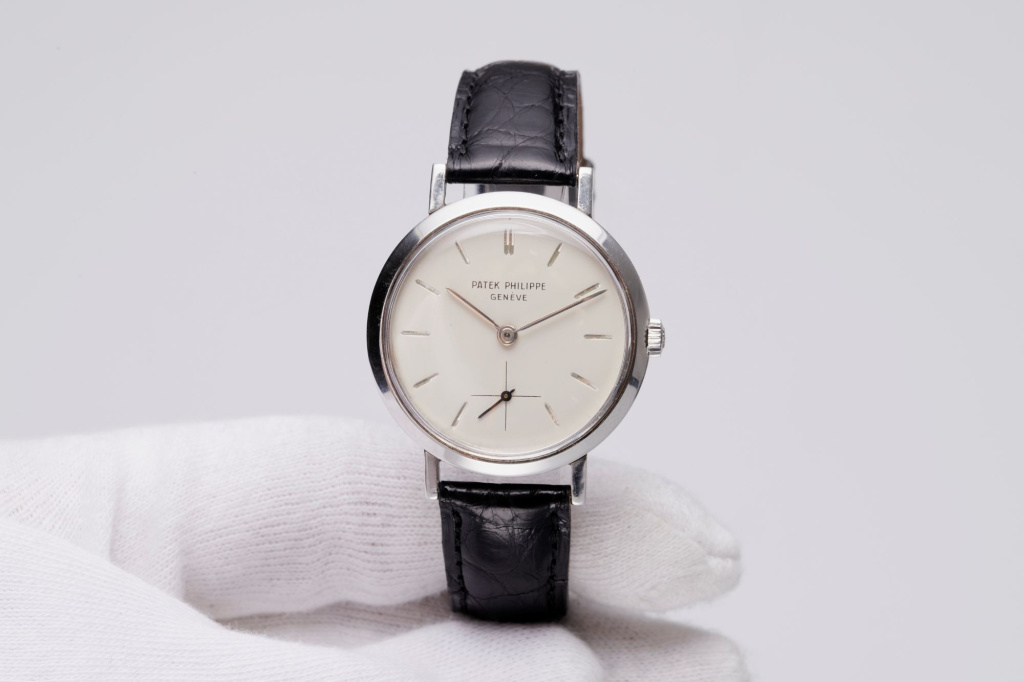
Two other lots are also important – Patek Philippe ‘Commemoration 1997 Pagoda’ Ref. 5500 (Lot 10) and Audemars Piguet Royal Oak ‘Jumbo’ Jubilee Limited Edition Ref. 14802ST from 1992 (Lot 22). Note that both of these lots were issued as commemorative models. Until their respective years of release, models of this type are extremely rare in the collections of both brands. The ‘Pagoda’ was introduced to celebrate the opening of the Patek Philippe Manufacture in Plan-les-Ouates, a suburb of Geneva, when the company united all its departments (except the famous boutique at 41 Rue du Rhone) under one roof. Ref. 5500 is interesting in that it’s a modern interpretation of the rectangular design of a rare 1940s Patek Philippe reference known as the ‘Tour Eiffel" This Ref. 5500G in 18k yellow gold was issued in a limited edition of 1100 pieces, and other versions of this design were also produced. Interestingly, Patek Philippe not only stated that this design would never be accurately reproduced in the future, but also destroyed the numerous tools used to shape and finish this highly complex case.
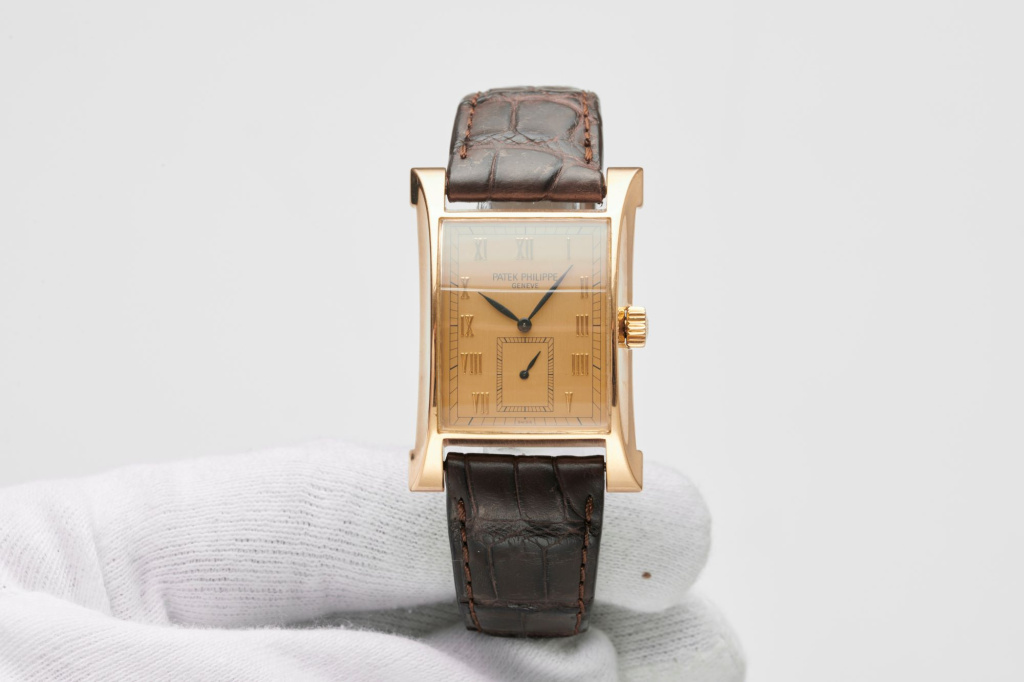
The Royal Oak ‘Jumbo’ Ref. 14802 (Lot 22) also represents a special moment in the history of the brand and the Royal Oak collection, as it was designed to celebrate the 20th anniversary of the launch of this design. The limited commemorative edition includes only 691 pieces in steel. This piece has a dial in the original dark blue color and a tapisserie relief decoration with increased density in 32 rows (tapisserie of the second type). Ref. 14802 is the first Royal Oak ‘Jumbo’ with a sapphire caseback that reveals the special edition automatic caliber 2121 with skeletonized oscillating weight, reproducing the characteristic Royal Oak bezel design and bearing the commemorative inscription ‘Royal Oak Jubilee’ and the limited edition number. This example is particularly interesting as it belongs to an early edition whose dial is marked with the so-called small Type1 logo, with an applied ‘AP’ monogram at the 12 o’clock position – hence this Ref. 14802ST should be referred to as early ‘Mark 1’ version (Mk1). Thanks to the self-winding caliber and the 39mm case, the Ref. 14802ST definitely fits to be a wearable watch, of course, if the owner of the watch has the desire to wear his treasure as a regular watch. Going out for a drive in your Ferrari on Sunday? Why not?
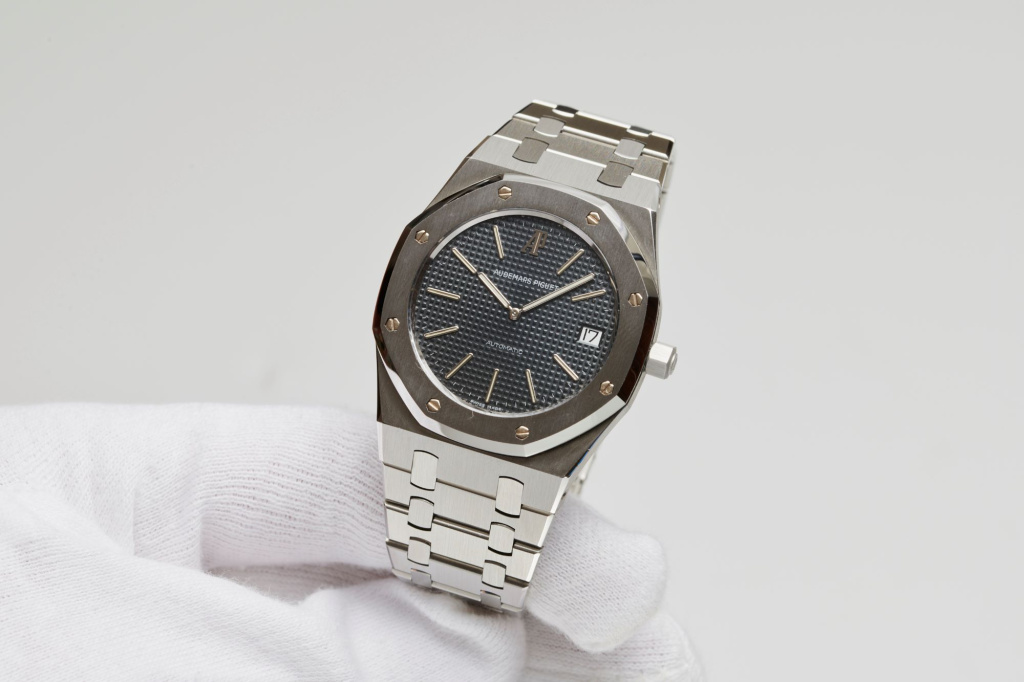
The attractiveness of a watch as a purchasing factor is a very personal matter, yet there are generally accepted favorites. These include, for example, the Audemars Piguet Royal Oak Offshore Ref. 25721ST ‘The Beast’ (Lot 36), the first model in the now famous Offshore collection. This example belongs to a late production period with case number 2370, and only about 2600 pieces of this reference are said to have been made. While this watch was perceived as a provocation and aggressive challenge to conventional tastes in 1993, it’s now considered a turning point in the evolution of modern wristwatch design. From our point of view, ‘The Beast’ has definitely become ‘The Beauty’, at least in the way design is perceived today.
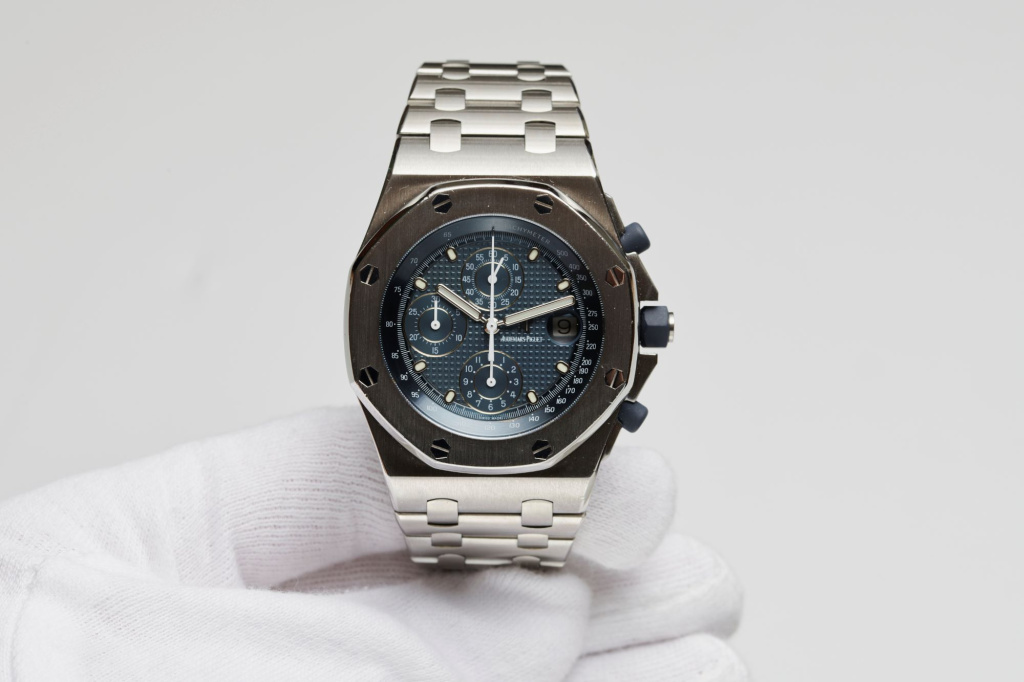
As for the ‘quality of the movement’ criterion, this auction offers undeniably pleasant discoveries. First of all, we’d like to draw attention to the early Calatrava of original Ref. 96 from 1938 (Lot 17), equipped with the excellent 12-120 caliber. The incredibly attractive movement is crafted in the classic Geneva style and has several distinctive design elements that make it exceptional. You can’t help but admire the beautiful design with the curved bridges, including the s-shaped main bridge, a welcome feature of beautiful Patek Philippe calibers, the fine finishes and of course (clearly the star of this show!) the wolf tooth ratchet wheel. This is the legend!
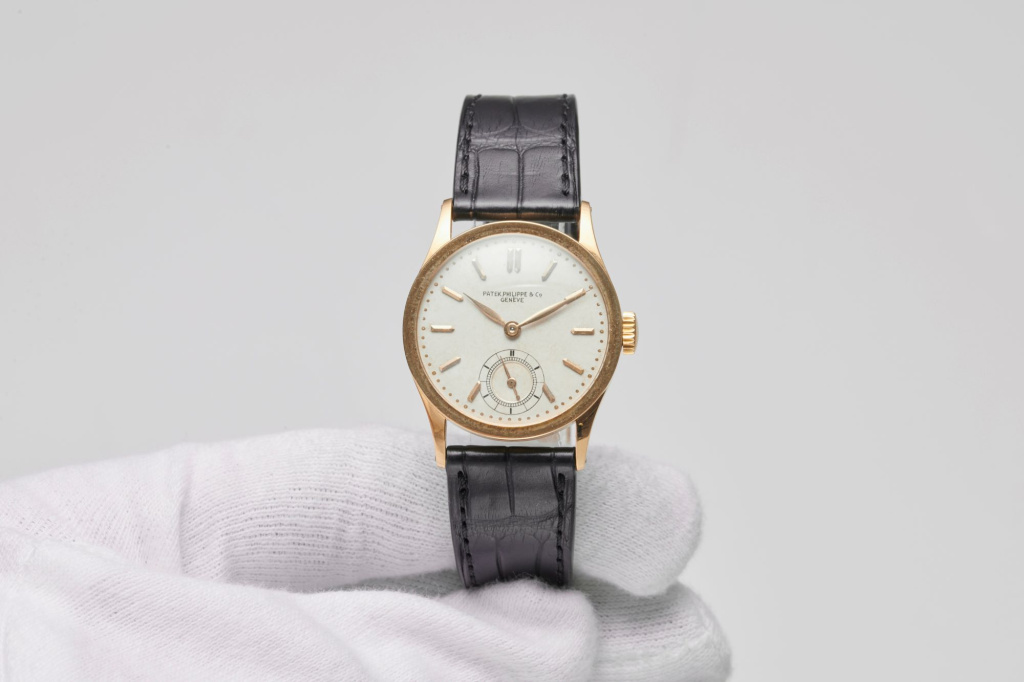
Of the modern vintage watches, the A. Lange & Söhne Cabaret ‘Darth’ Ref. 107.035 in platinum with black dial (Lot 1) is an absolute stunner. It’s all about the caliber here. The Cabaret has a tough fate, to be honest. This rectangular watch has always been overshadowed by the much more popular Lange 1, Saxonia and 1815, but we declare that the shaped rectangular caliber L931.3 is a true rarity and beauty, and owning a watch with such a caliber is a pleasure. After all, there aren’t so many hi-end shaped calibers in our world. Of course, the rarity of the Cabaret is due to the cool reaction of customers, but such are the grimaces of watch fate. About the same thing happened to the Daytona, remember?
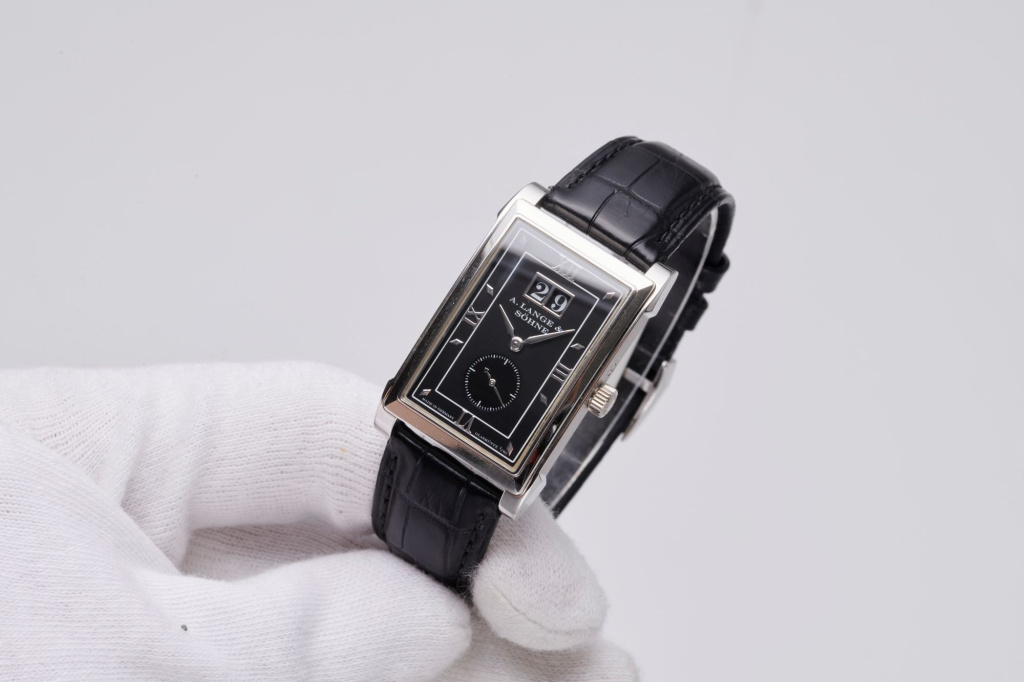
Some watches offer amazing discoveries. With this in mind, we should especially mention the mystical Patek Philippe Ref. 3585 (Lot 40), made in the 1970s and known as the ‘Backwinder.’ This nickname comes from the crown that is placed on the caseback, giving the design of the watch a rare symmetry, as the traditional crown is missing. But the main feature that should make collectors take a close look at this watch is its automatic caliber 350, the first movement with a peripheral rotor in the history of watchmaking. The rotor, which circulates the movement from the side, forced the designers to move the crown to the back of the case, which was certainly a relevant decision.
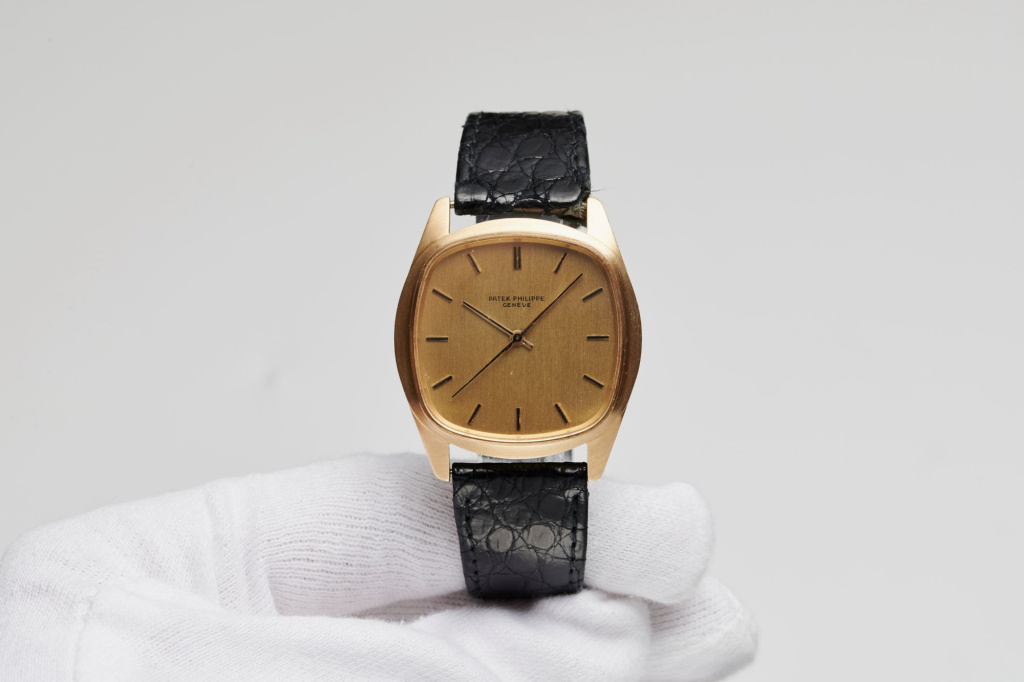
In addition, the list of attractive lots of this auction is completed by rare triple calendars by Vacheron Constantin (Lot 20), Jaeger-LeCoultre (Lot 18), Ulysse Nardin (Lot 19) and Omega (Lot 15), perpetual calendars by Parmigiani Fleurier (Lot 03), Breguet (Lot 09), Audemars Piguet (Lot 05), the latter with rare astronomic complications of equation of time, sunrise and sunset, three chronographs using the Zenith El Primero as their base caliber – the Rolex Cosmograph Daytona ‘Inverted 6’ in steel and yellow gold (Lot 31), the Parmigiani Fleurier Toric Chronograph with black dial (Lot 02), and the Daniel Roth Masters Chronograph ‘El Primero’ Ref. S247 (Lot 23) with an extremely rare dark blue dial. Also worthy of mention are the coveted mid-size stainless steel Patek Philippe Aquanaute Ref. 5066 (Lot 27), the Rolex GMT-Master Ref. 16753 (Lot 32) known as ‘Root Beer’ or ‘Clint Eastwood Rolex,’ Rolex GMT-Master II Ref. 16710 (Lot 29) known as ‘Coke,’ stainless-steel Rolex Cosmograph Ref. 6265 (Lot 43) with ‘Fuerza Aerea del Peru’ caseback, ‘reverse panda sigma no-Daytona’ dial and 50-200 tachymeter bezel, and the rare and magnificent yellow gold Rolex Cosmograph Ref. 6265 (Lot 42) with gold-toned ‘panda no-Daytona’ ‘T Swiss T’ dial, 50-200 tachymeter bezel and Triplock crown.
We invite connoisseurs to carefully study the catalog of this auction on our website, we’re sure you’ll make some pleasant discoveries there.